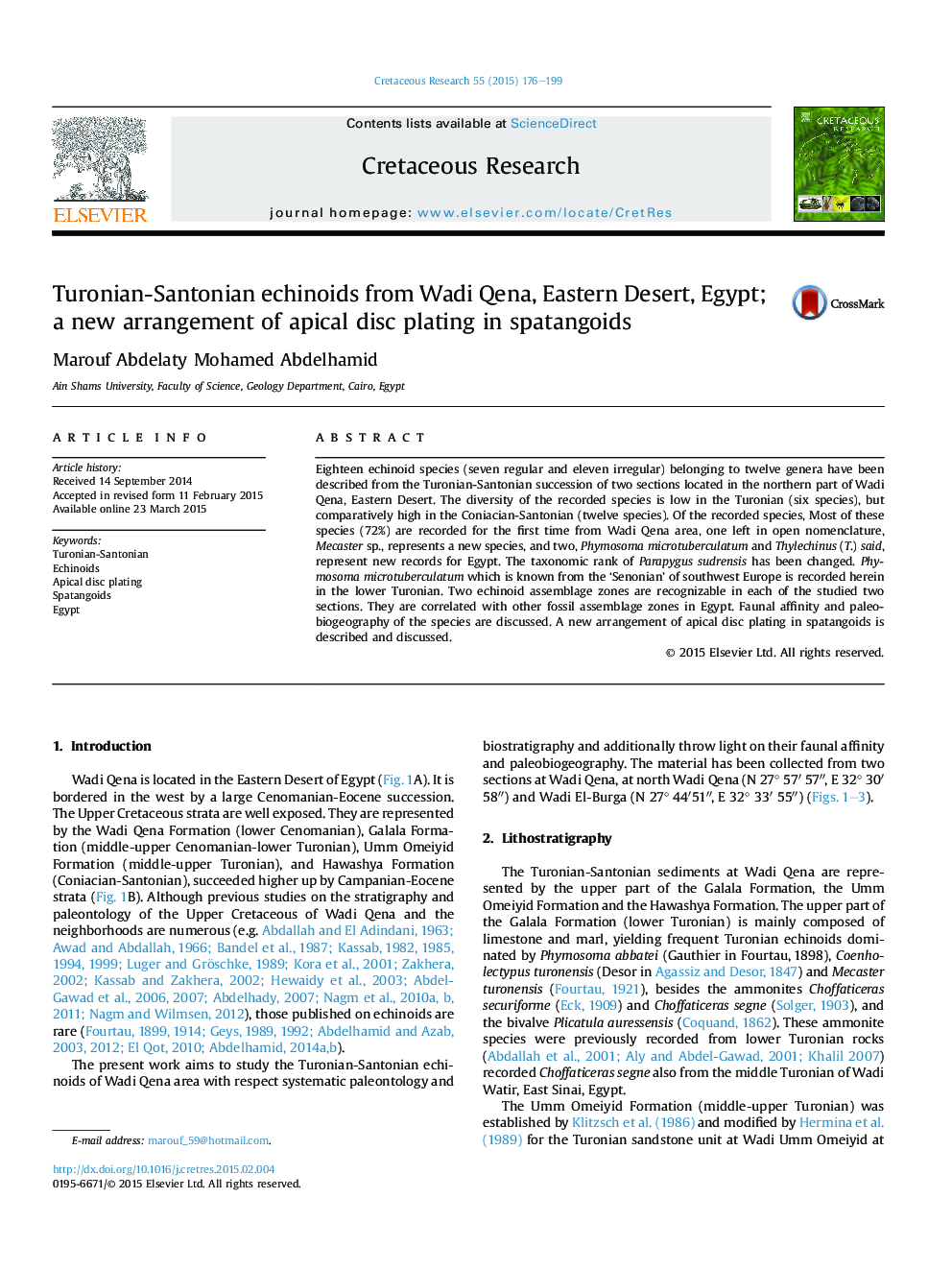| Article ID | Journal | Published Year | Pages | File Type |
|---|---|---|---|---|
| 4746906 | Cretaceous Research | 2015 | 24 Pages |
Abstract
Eighteen echinoid species (seven regular and eleven irregular) belonging to twelve genera have been described from the Turonian-Santonian succession of two sections located in the northern part of Wadi Qena, Eastern Desert. The diversity of the recorded species is low in the Turonian (six species), but comparatively high in the Coniacian-Santonian (twelve species). Of the recorded species, Most of these species (72%) are recorded for the first time from Wadi Qena area, one left in open nomenclature, Mecaster sp., represents a new species, and two, Phymosoma microtuberculatum and Thylechinus (T.) said, represent new records for Egypt. The taxonomic rank of Parapygus sudrensis has been changed. Phymosoma microtuberculatum which is known from the 'Senonian' of southwest Europe is recorded herein in the lower Turonian. Two echinoid assemblage zones are recognizable in each of the studied two sections. They are correlated with other fossil assemblage zones in Egypt. Faunal affinity and paleobiogeography of the species are discussed. A new arrangement of apical disc plating in spatangoids is described and discussed.
Related Topics
Physical Sciences and Engineering
Earth and Planetary Sciences
Palaeontology
Authors
Marouf Abdelaty Mohamed Abdelhamid,
